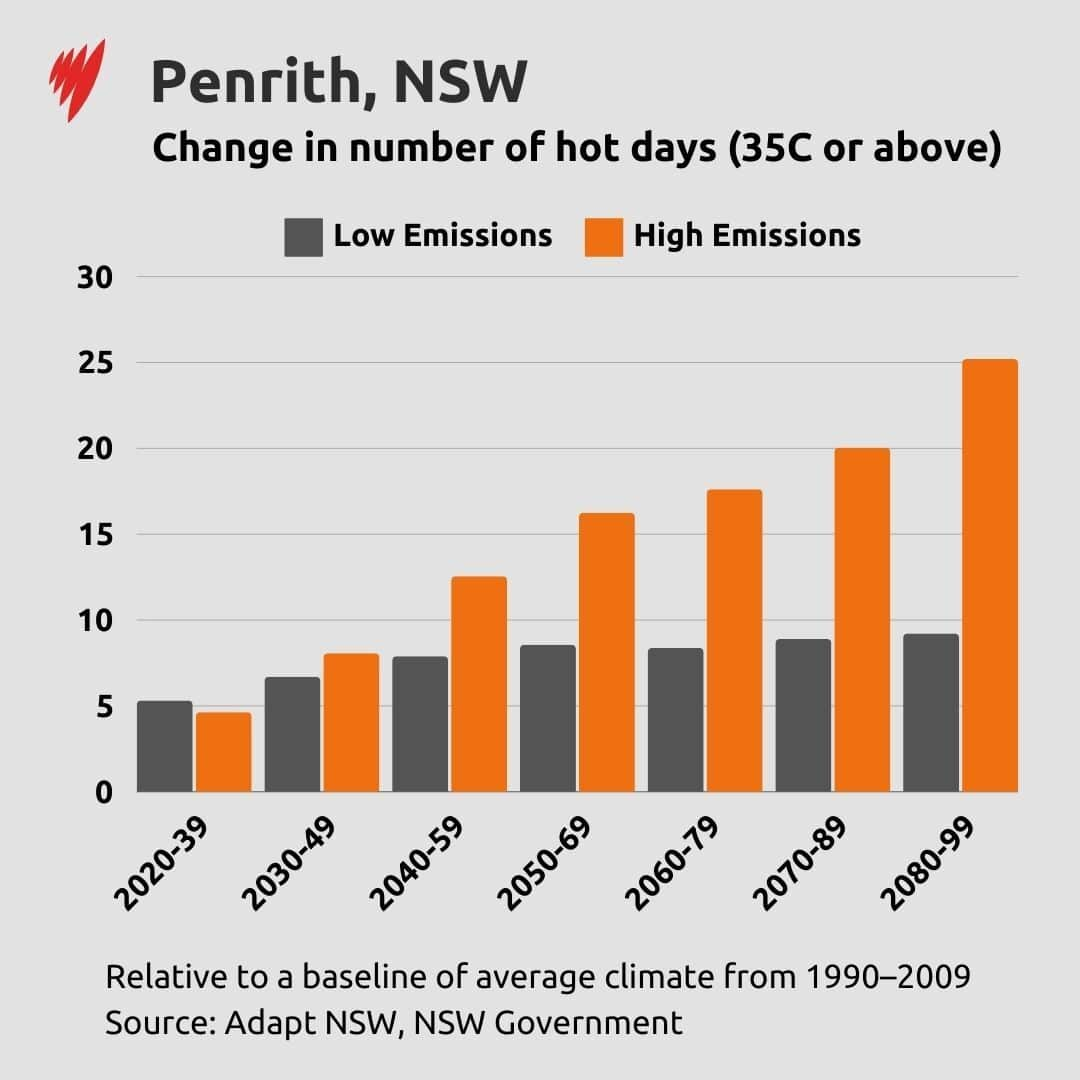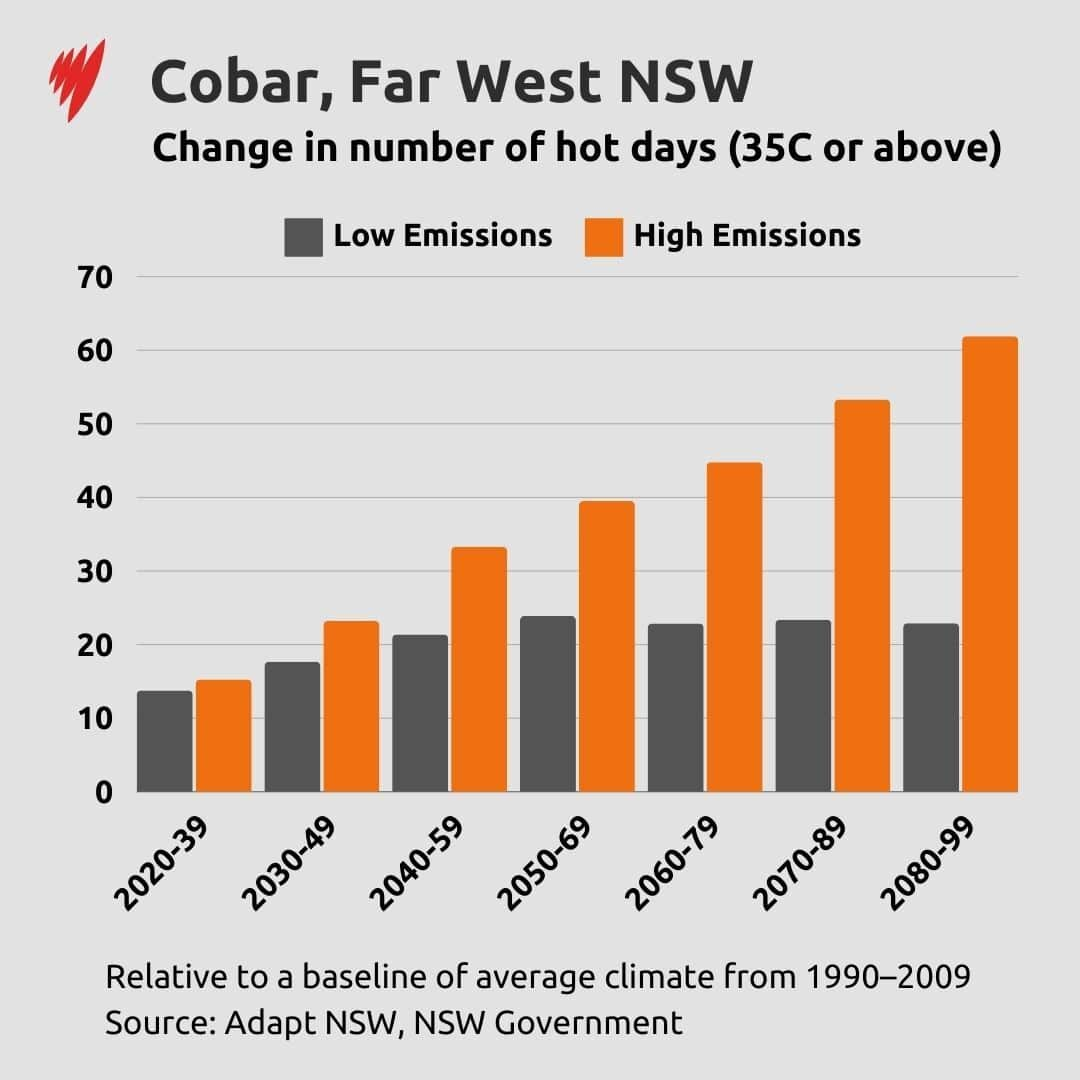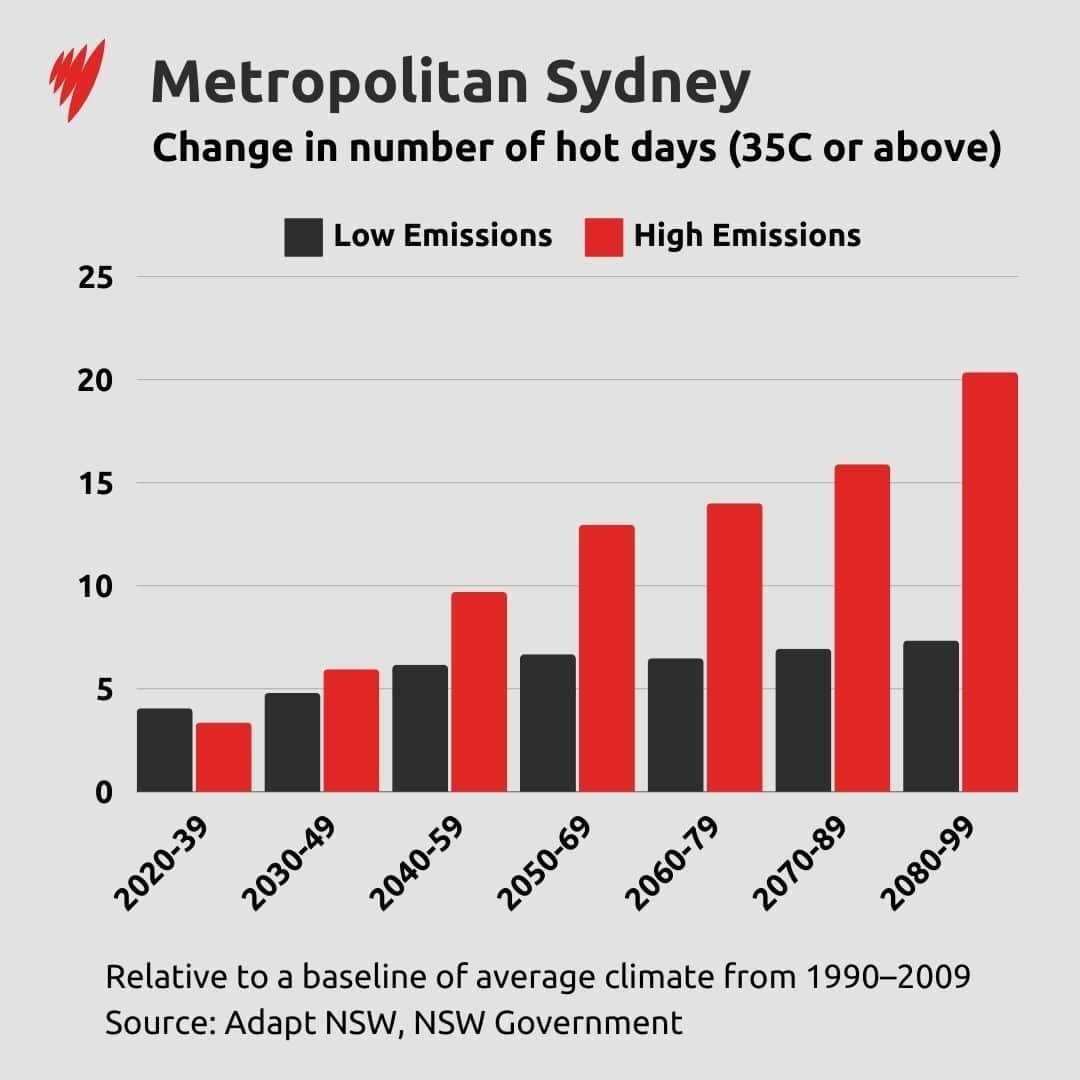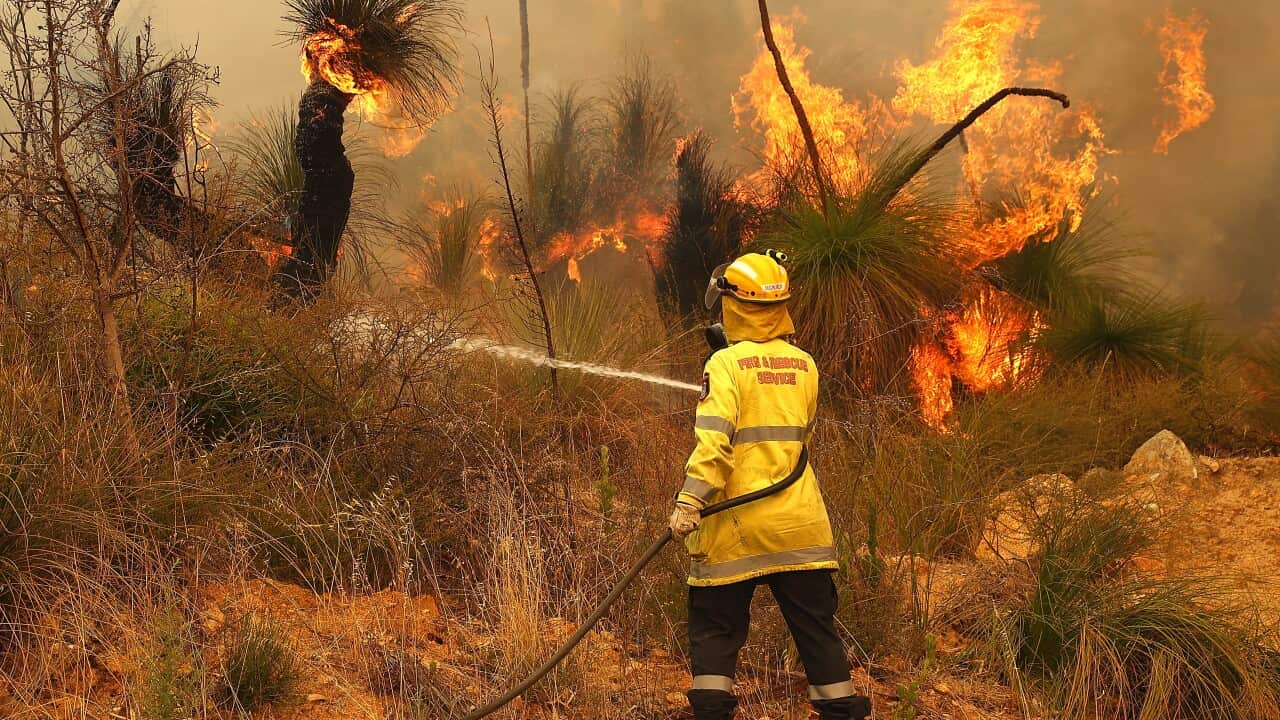The number of extremely hot days — where temperatures surpass 35C — could double in parts of metropolitan Sydney in 25 years, according to new research.
Higher temperatures, more dangerously hot days, fewer cold nights below 2C, and more severe fire weather days all feature in the model of how climate change could impact people living in NSW and the ACT between now and 2099.
Areas of Sydney had five days above 35C per year in the modelled baseline period between 1990 and 2009. This could increase by five days in 2030-2049, 10 days in 2040-2050 and 20 days by 2080-2099, according to the NSW Climate Data Portal.
Where will the number of hot days increase the most?
Greater Western Sydney, which experienced 10–20 hot days on average, is expected to see the greatest impact, according to this research.
In addition to hot days, severe fire weather days and autumn rainfall are also projected to increase in the future in the Sydney region.
Suburbs like Penrith in western Sydney, which is projected to grow by one per cent every year over the next two decades, may experience around 12 additional hot days between 2040 and 2059.
For the same period, Cobar in regional NSW may have to endure more than 30 additional days of 35-degree days, making it amongst the places likely to be worst-affected.
Low emissions vs high emissions
The projections compare what’s expected under a low emissions scenario and a high one, with every measure dramatically worse under high emissions.
For example, it is projected that between 2040-2059 in the low emissions scenario, the number of additional hot days above 35C in Metropolitan Sydney will be between five and six whereas in the high emissions scenario, that number is likely to touch 10.
Do global climate models give a full picture?
Models cannot account for factors that are not yet understood, with the Adapt NSW site mentioning the rate at which greenhouse gas emissions will be reduced being an unknown.
Global climate models (GCMs) are developed, and constantly being refined, at climate modelling centres around the world.
These are mainly in the northern hemisphere and include the Met Office Hadley Centre in the UK, and the NOAA Geophysical Fluid Dynamics Laboratory in the US.
In Australia, this is carried out by CSIRO and the Bureau of Meteorology.



